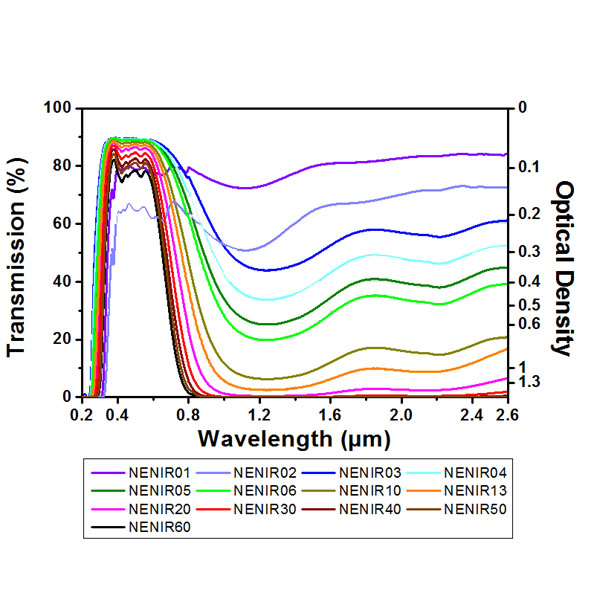en
Neutral density filters use the absorption or reflection properties of substances to light to attenuate light intensity. After the light from the visible light region to the near-infrared light region passes through the neutral density filter, different wavelengths are attenuated in the same proportion. The optical element maintains approximately the same transmittance of light energy in a wide band. Also known as neutral density filter, neutral filter, ND filter, attenuation filter, fixed density filter, etc.
Neutral Density (ND) filters can attenuate the light intensity. After the light from the visible light region to the near-infrared light region passes through the neutral density filter, different wavelengths are attenuated in the same proportion, so that the optical element maintains approximately equal light energy transmission in a wide band. over rate. Also known as neutral density filter, neutral filter, ND filter, attenuation filter, fixed density filter, etc.
Neutral Density (ND) filters are designed to uniformly reduce transmission over a specific part of the spectrum. ND filters are generally defined by their optical density (OD), which describes the amount of energy blocked by the filter. High optical density values indicate very low transmission, and low optical density indicates high transmission (Equation 1-2). ND filters can be stacked to achieve customized optical densities. To calculate the final system OD, simply add the OD of each filter.

Example 1: If filters for OD 0.3 and OD 1.5 are stacked, what is the transmission?

Example 2: How to build a filter with a transfer rate of 0.5%?

There are two types of ND filters: reflective and absorbing. Reflective ND filters consist of thin-film optical coatings, usually metallic, that have been applied to glass substrates. The coating can be optimized for specific wavelength ranges such as UV-VIS or NIR. Thin-film coatings primarily reflect light back to the source. Special care should be taken to ensure that reflected light does not interfere with system setup. Absorptive ND filters utilize a glass substrate to absorb a specific percentage of light.

Application areas: UV measuring instruments, various lasers, optical digital cameras, video cameras, security monitoring, various optical instruments and equipment, optical communication attenuation filters, optical imaging systems, smoke meters, optical measuring instruments, near-infrared spectrometers, biochemical analysis equipment, etc.
If you would like to build your own precision optical products or request a quote, please click one of the two buttons below. Otherwise, please fill out the form below with any questions or concerns.

Address
B3 Shengshi Shengshi Industrial Park,Auto-ETDZ, Changchun, Jilin, China
Call Us